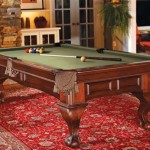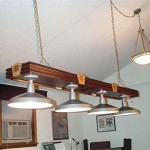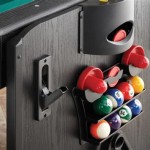Crafting the Perfect Thanksgiving Dinner Table Setting
The Thanksgiving holiday is a time for families and friends to gather, express gratitude, and enjoy a bountiful meal. The visual appeal of the dining table significantly contributes to the festive atmosphere and enhances the overall dining experience. Careful consideration of the Thanksgiving dinner table settings creates a welcoming and memorable celebration. This article explores the various elements involved in designing an inviting and aesthetically pleasing Thanksgiving table, focusing on key aspects like color palettes, linens, centerpieces, and place settings.
Choosing a Color Palette and Theme
The foundational step in creating a compelling Thanksgiving table setting is selecting a cohesive color palette. The chosen colors influence the mood and tone of the gathering. Traditional Thanksgiving color schemes commonly feature warm, earthy tones such as browns, oranges, reds, and yellows, reflecting the autumnal season and harvest themes. These colors evoke feelings of warmth, comfort, and abundance.
However, deviating from traditional palettes allows for personal expression and stylistic creativity. A more modern approach might incorporate muted colors like creams, grays, and sage greens, accented with metallic touches of gold or copper. These palettes create a sophisticated and elegant ambiance. Alternatively, incorporating jewel tones like deep purples, emerald greens, and sapphire blues can add a touch of luxury and drama.
The theme should complement the chosen color palette. A rustic theme might incorporate natural elements like wood slices, burlap runners, and pinecones. A more formal theme could feature elegant china, crystal glassware, and silver accents. The theme ensures that all elements of the table setting work together harmoniously.
The choice of color palette should also consider the existing décor of the dining room. A harmonious blend of the table setting and the room’s existing colors creates a more cohesive and visually appealing environment. This attention to detail elevates the overall aesthetic of the Thanksgiving celebration.
Selecting Linens and Table Runners
Linens play a crucial role in determining the tone and formality of the Thanksgiving table. A tablecloth serves as the foundation of the table setting, providing a backdrop for the other elements. The choice of fabric, color, and pattern significantly impacts the overall aesthetic.
For a formal Thanksgiving dinner, a crisp, white linen tablecloth is a classic and elegant choice. This creates a clean and sophisticated backdrop that allows the other elements of the table setting to stand out. A colored or patterned tablecloth can be used for a less formal or more festive occasion. Damask or jacquard fabrics add a subtle texture and visual interest.
Table runners offer an opportunity to introduce color, texture, and visual interest to the table. A runner placed down the center of the table can serve as a focal point and anchor for the centerpiece. Burlap runners are suitable for rustic themes, while silk or velvet runners add a touch of luxury. Runners can also be used to create individual place settings, adding a personalized touch.
Napkins are another essential linen element. Cloth napkins add a touch of elegance and sophistication compared to paper napkins. The color and fabric of the napkins should complement the tablecloth and table runner. Napkins can be folded into decorative shapes or simply placed neatly beside the plates. Napkin rings offer a decorative element and can be chosen to match the overall theme.
Consider the size of the table when selecting linens. The tablecloth should drape evenly on all sides, creating a balanced and visually appealing look. The runner should be long enough to extend beyond the centerpiece but not so long that it obstructs seating. The napkins should be appropriately sized and easy to handle.
Creating a Captivating Centerpiece
The centerpiece acts as the focal point of the Thanksgiving table, drawing the eye and setting the tone for the celebration. A well-designed centerpiece enhances the visual appeal of the table and contributes to the overall ambiance.
Traditional Thanksgiving centerpieces often feature autumnal elements like pumpkins, gourds, cornucopias, and fall foliage. These elements evoke the harvest season and create a sense of abundance. Arrangements can be created using natural materials gathered from the outdoors or purchased from a florist or craft store.
Floral arrangements are a popular choice for Thanksgiving centerpieces. Flowers in warm, earthy tones like sunflowers, chrysanthemums, and roses capture the essence of the season. Combining flowers with greenery like eucalyptus or ferns adds texture and visual interest. The size and scale of the floral arrangement should be proportionate to the size of the table.
Candles add warmth and ambiance to the Thanksgiving table. Pillar candles, taper candles, or votive candles can be incorporated into the centerpiece to create a soft, inviting glow. Candles should be placed safely and away from flammable materials. Scented candles can add a pleasant aroma to the dining room, but strong scents should be avoided as they may interfere with the taste of the food.
Non-traditional centerpieces offer an opportunity to express personal creativity and style. A collection of antique silver serving pieces, a display of vintage books, or a grouping of decorative objects can serve as a unique and eye-catching centerpiece. The key is to choose elements that reflect the personality and taste of the host.
The height of the centerpiece should be considered to ensure that it does not obstruct the view of guests across the table. Low arrangements or tall, slender arrangements are ideal for facilitating conversation and maintaining a comfortable dining experience. The centerpiece should complement the other elements of the table setting without overpowering them.
Arranging Place Settings
The arrangement of place settings is a critical aspect of the Thanksgiving table. A well-organized place setting ensures that guests have everything they need to enjoy the meal comfortably and efficiently. The placement of each item should be both functional and aesthetically pleasing.
The basic place setting typically includes a dinner plate, a salad plate, a soup bowl (if soup is being served), silverware, glassware, and a napkin. The dinner plate is placed in the center of the setting. The salad plate is placed on top of the dinner plate, and the soup bowl is placed on top of the salad plate if it is being used.
Silverware is arranged according to the order in which it will be used. The fork is placed to the left of the plate, and the knife is placed to the right of the plate with the blade facing inward. The spoon is placed to the right of the knife. The dessert fork and spoon are placed above the plate, with the fork pointing to the left and the spoon pointing to the right.
Glassware is placed to the right of the silverware. A water glass is typically placed above the knife, and a wine glass is placed to the right of the water glass. If multiple wines are being served, additional wine glasses can be added. The glassware should be clean and free of water spots.
Napkins can be placed to the left of the fork, on top of the dinner plate, or in the water glass. The placement of the napkin depends on the style and formality of the table setting. Napkin rings can be used to add a decorative touch and keep the napkins neatly folded.
Place cards add a personalized touch to the Thanksgiving table and help to guide guests to their seats. Place cards can be simple handwritten cards or elaborate, decorative creations. They can be placed on top of the dinner plate, in a napkin ring, or in a small holder.
Consider the spacing between place settings to ensure that guests have enough room to eat comfortably. A general rule of thumb is to allow at least 24 inches of space per person. This allows guests to move freely and avoid bumping elbows with their neighbors.
Adding personal touches to each place setting enhances the overall dining experience. Small favors, handwritten notes, or seasonal decorations can be placed at each setting to show appreciation for the guests. These thoughtful gestures contribute to the warmth and hospitality of the Thanksgiving celebration.
Ensuring all place settings are consistent throughout the table contributes to a harmonious and polished look. Minor variations are acceptable, especially if using vintage or mismatched pieces, but strive for a cohesive arrangement that reflects attention to detail and thoughtful planning.

40 Best Thanksgiving Table Setting Ideas 2024

65 Best Thanksgiving Table Settings Ideas And Decorations 2024

20 Thanksgiving Dining Table Setting Ideas Artisan Crafted Iron Furnishings And Decor Blog Decorations

Diy Thanksgiving Table Setting Decor Ideas

These Thanksgiving Table Setting Ideas Will Make Your Tables Look So Festive This Holiday Season He Fall Dining Decor

7 Amazing Thanksgiving Table Decor Ideas

Stunning Thanksgiving Table Settings Forbes Home

How To Set A Thanksgiving Table In Warm Fall Colors Sanctuary Home Decor

58 Best Thanksgiving Table Setting Ideas And Decor For 2024

Simple Thanksgiving Table Setting Idea Life Of Alley
Related Posts








